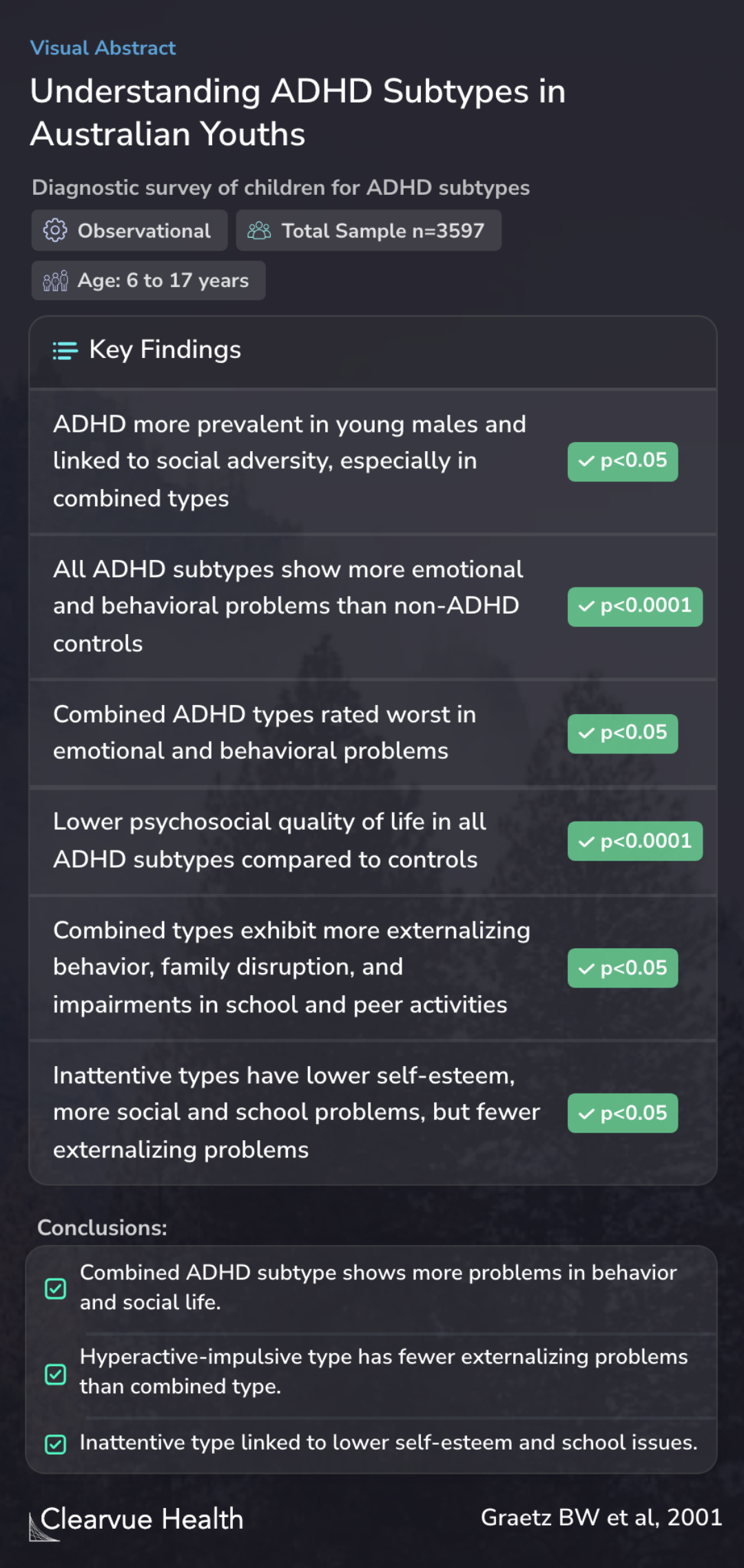Validity of DSM-IVADHD subtypes in a nationally representative sample of Australian children and adolescents
Understanding ADHD Subtypes in Australian Youths
Graetz BW, Sawyer MG, Hazell PL, Arney F, Baghurst P

Objectives
The study's main aim was to examine the distinctiveness of DSM-IV attention-deficit/hyperactivity disorder (ADHD) subtypes in Australian youths. This investigation sought to determine if these ADHD classifications were clear and different from each other.
To examine the discriminant validity of DSM-IV attention-deficit/hyperactivity disorder (ADHD) subtypes in a nationally representative sample of Australian youths.
Methods
To achieve this, the study engaged 3,597 Australian children aged 6 to 17 years. Parents of these children were given a comprehensive Diagnostic Interview Schedule for Children, along with questionnaires focusing on the emotional and behavioral problems of their children and their overall quality of life.
The Diagnostic Interview Schedule for Children, including the symptom-specific impairment questions, was administered to 3,597 parents of children aged 6 to 17 years (response rate = 70%). Parents also completed questionnaires assessing children's emotional and behavioral problems and qu...
Results
The findings revealed that 7.5% of the participants had ADHD, with 6.8% showing impairment. It was observed that inattentive types of ADHD were more common than the hyperactive-impulsive and combined types. However, the combined type was associated with more significant challenges, including a higher prevalence among young males and a link to social adversity. Compared to their non-ADHD peers, children with any ADHD subtype exhibited more emotional and behavioral problems and had a lower psychosocial quality of life. Notably, the combined type was consistently rated as the most impaired, particularly in terms of externalizing behavior problems, disruption to family activities, and impairments in school and peer interactions. In contrast, the inattentive types were marked by lower self-esteem and more social and school-related problems, but fewer externalizing problems than the hyperactive-impulsive types.
Current DSM-IVADHD prevalence was 7.5% (6.8% with impairment) with inattentive types being more common than hyperactive-impulsive and combined types. ADHD was more prevalent among young males and was linked to social adversity, particularly for combined types. Compared with non-ADHD cont...
Conclusions
The study concludes that ADHD subtypes as defined in the DSM-IV are indeed distinct entities, each with its unique impairments in multiple domains. This indicates the complexity and varied nature of ADHD and underscores the importance of recognizing these differences for effective diagnosis and treatment.
These findings support the view of DSM-IVADHD subtypes as distinct clinical entities with impairments in multiple domains.
Key Takeaways
Context
In the broader scope of ADHD research, it's known that ADHD subtypes can change over time and may present differently in adults. This aligns with studies like Lahey BB et al. (2010), which highlighted the dynamic nature of ADHD symptoms over eight years, influencing treatment needs and academic performance.
Similarly, Wilens TE et al. (2009) emphasized the variability in ADHD presentation among adults, particularly the predominance of inattentive symptoms. These findings underline the evolving nature of ADHD across the lifespan and the necessity for nuanced approaches to diagnosis and treatment that consider these variations.